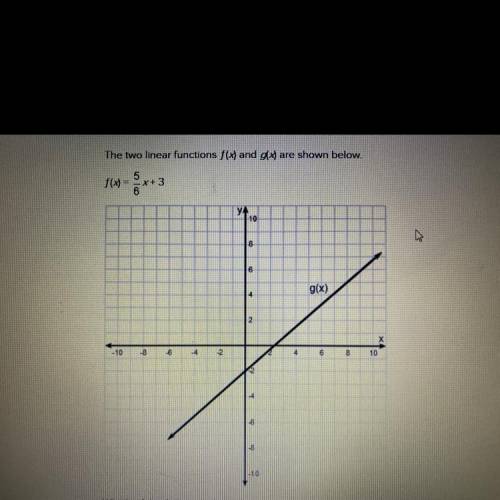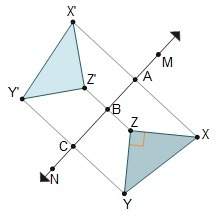The two linear functions f(x) and g(x) are shown below.
f(x) 5/6 x +3
Which...

Mathematics, 07.03.2020 02:34 samarahbrown6050
The two linear functions f(x) and g(x) are shown below.
f(x) 5/6 x +3
Which of the following is true?
The rate of change of the function g(x) is -2.
The rate of change of f(x) is 20/21 times the rate of change of g(x).
The rate of change of f(x) is greater than the rate of change of g(x).
The product of the rate of changes of f(x) and g(x) is -6.


Answers: 2


Another question on Mathematics

Mathematics, 20.06.2019 18:04
Which operation should be performed first according to the order of operations? 44 • 2 – [(5 + 20 • 3) – 12] + 16 ÷ 2 5 + 20 20 • 3 16 ÷ 2 44 • 2
Answers: 2

Mathematics, 21.06.2019 18:00
Write an equation in slope intercept form of the line passes through the given point and is parallel to the graph of the given equation (0,0); y=3/8 x+2
Answers: 1

Mathematics, 21.06.2019 20:30
Tom is the deli manager at a grocery store. he needs to schedule employee to staff the deli department for no more that 260 person-hours per week. tom has one part-time employee who works 20 person-hours per week. each full-time employee works 40 person-hours per week. write and inequality to determine n, the number of full-time employees tom may schedule, so that his employees work on more than 260 person-hours per week. graph the solution set to this inequality.
Answers: 2

Mathematics, 21.06.2019 21:00
Asequence has its first term equal to 4, and each term of the sequence is obtained by adding 2 to the previous term. if f(n) represents the nth term of the sequence, which of the following recursive functions best defines this sequence? (1 point) f(1) = 2 and f(n) = f(n − 1) + 4; n > 1 f(1) = 4 and f(n) = f(n − 1) + 2n; n > 1 f(1) = 2 and f(n) = f(n − 1) + 4n; n > 1 f(1) = 4 and f(n) = f(n − 1) + 2; n > 1 i will award !
Answers: 1
You know the right answer?
Questions






Health, 17.10.2019 21:40


Mathematics, 17.10.2019 21:40



Mathematics, 17.10.2019 21:40

Mathematics, 17.10.2019 21:40


Chemistry, 17.10.2019 21:40




Mathematics, 17.10.2019 21:40


Social Studies, 17.10.2019 21:40





